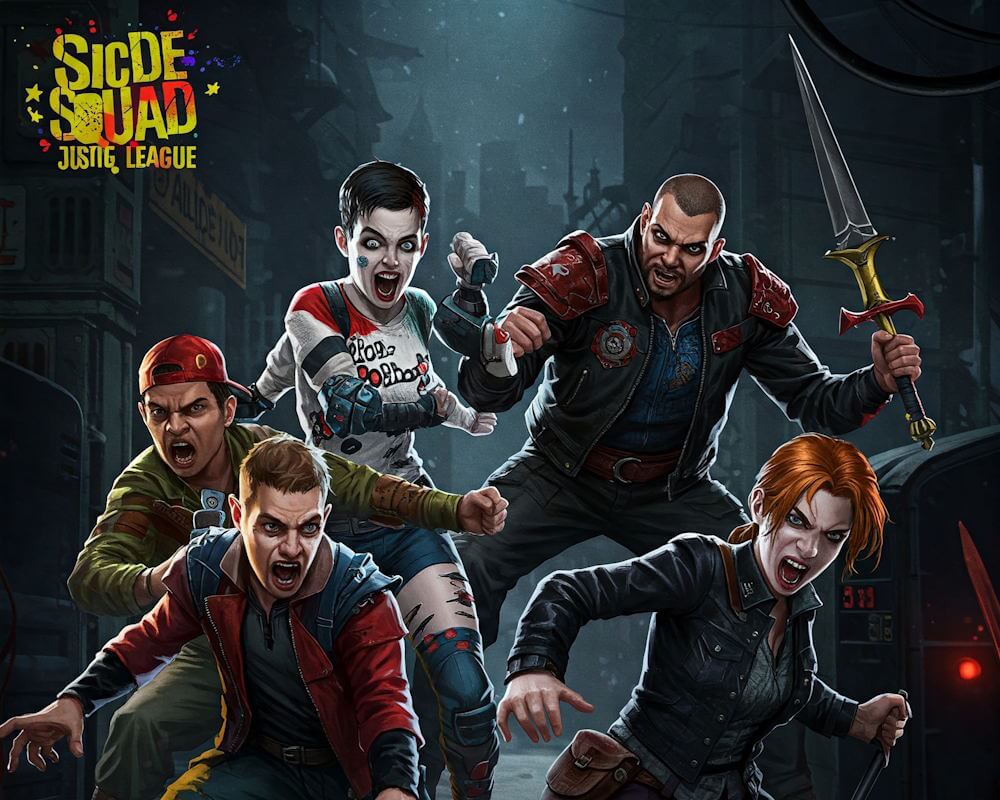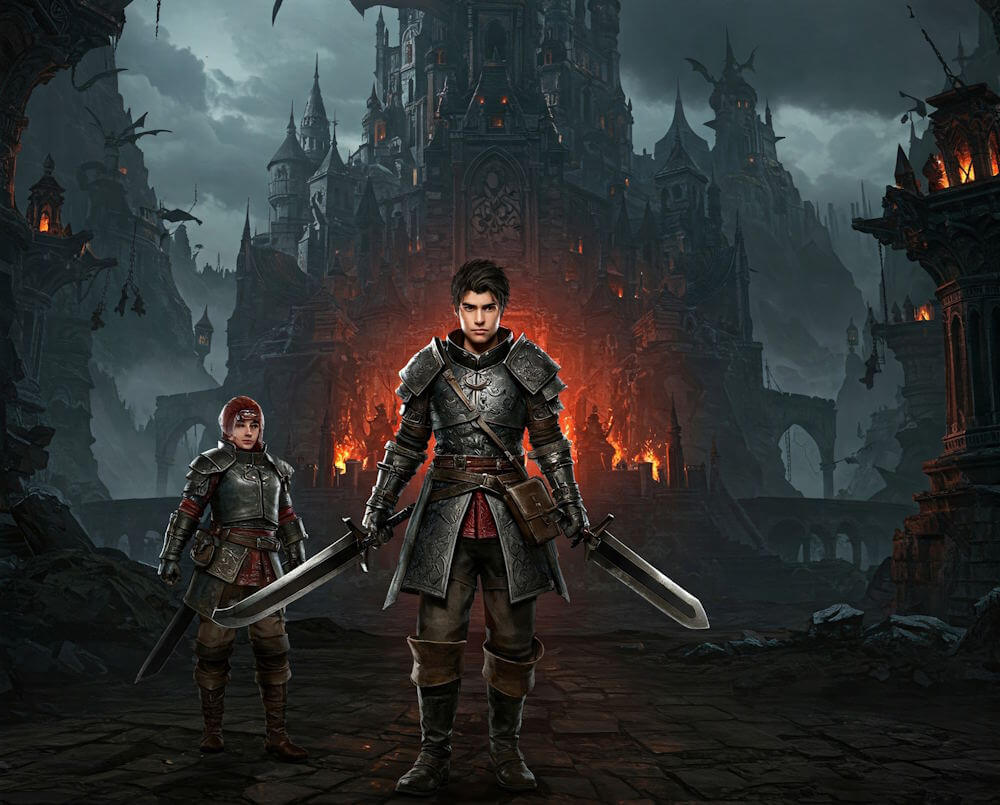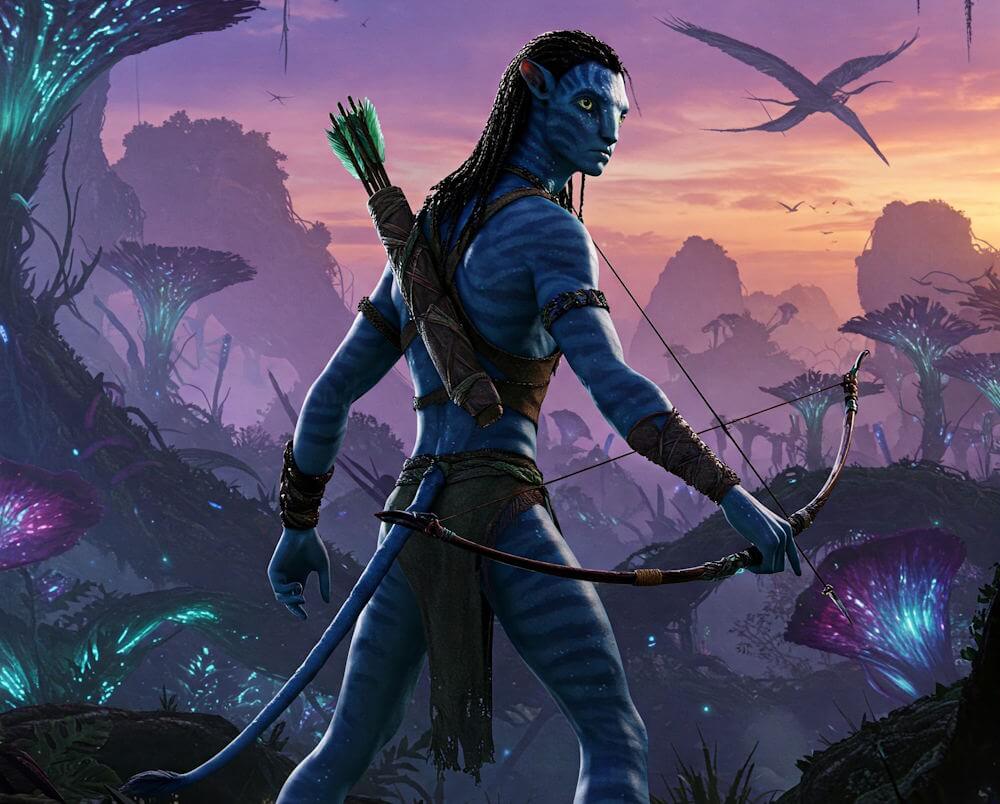Set in the dynamic and richly crafted universe of DC Comics, Suicide Squad: Kill the Justice League is an action-adventure game that invites players into the chaotic world of antiheroes. Developed by Rocksteady Studios, known for their critically acclaimed Arkham series, the game was positioned as a groundbreaking experience that would allow players to engage with some of the most notorious villains in DC lore. The game centers around a mission entrusted to the Suicide Squad, which consists of characters such as Harley Quinn, Deadshot, Captain Boomerang, and King Shark, as they endeavor to eliminate brainwashed members of the Justice League, including Superman, who has succumbed to a malevolent force.
The development of this title sparked immense anticipation among fans, fueled by the studio’s success with previous installments that showcased narratives rich in character development and immersive gameplay. As news about Kill the Justice League began to circulate, excitement mounted, especially with descriptions highlighting intricate combat mechanics and an expansive open-world Gotham City awaiting exploration. The blending of iconic characters within this unique context promised an experience that would both pay homage to the original source material while also building upon it in fresh and innovative ways.
Prior to its release, expectations were high, as fans envisioned an engaging storyline intertwined with the comic’s thrilling action sequences. Central to this excitement was Rocksteady’s commitment to crafting a narrative that balanced humor and darkness, reflecting the very essence of the Suicide Squad. As the launch date approached, it sparked spirited discussions among the community regarding gameplay mechanics and the overarching implications for the DC Universe. Enthusiasts were eager to see how these beloved antiheroes would fare against the traditional champions of justice, setting the stage for an anticipated clash ripe with potential for captivating storytelling and dynamic gameplay.
The Villainous Appeal of Suicide Squad
In the realm of comic books and video games, the allure of supervillains has always captivated audiences. Unlike traditional heroes, who often embody ideals of righteousness and justice, supervillains present a more complex and multifaceted representation of morality. The opportunity to step into the shoes of notorious characters like Harley Quinn, Deadshot, and Captain Boomerang allows players to explore the darker sides of heroism and morality. This shift in perspective contributes significantly to the appeal of games like “Suicide Squad: Kill the Justice League.”
The character dynamics within the Suicide Squad add depth to the gameplay experience. Each member brings a unique set of abilities, personality traits, and narrative backgrounds, allowing for varied interactions and cooperative strategies. As gamers embody these antiheroes, they not only engage in thrilling combat sequences but also experience evolving relationships among the characters themselves. This camaraderie, often riddled with tension and humor, mirrors the complexity of the source material, thereby enriching the gaming experience and resonating with comic book fans.
Moreover, the fun of playing as a supervillain lies in the freedom to act outside societal norms. Players relish the chance to execute plans of mayhem and chaos, often without accountability. In “Suicide Squad: Kill the Justice League,” this is ingeniously translated into gameplay mechanics that reward creativity in combat and decision-making. The mechanics facilitate both single-player and cooperative play, encouraging teamwork among diverse character skill sets while emphasizing individual play styles. This interactive play showcases not only the potential for conflict resolution through collaboration but also the tantalizing thrill of choosing an evil path.
The blend of action, character-driven narratives, and the empowerment of choosing villainy over heroism makes the Suicide Squad a unique proposition in the gaming landscape, appealing both to gamers seeking an exhilarating experience and comic book enthusiasts drawn to the complex nature of these iconic antiheroes.
Gameplay Mechanics and Features
In “Suicide Squad: Kill the Justice League,” players are introduced to a diverse set of gameplay mechanics that aim to redefine the supervillain experience. The game primarily revolves around a dynamic combat system, which emphasizes fluid movement and strategic attacks. Each character in the Suicide Squad, including Harley Quinn, Deadshot, Captain Boomerang, and King Shark, possesses unique abilities that cater to different playstyles. For instance, Harley Quinn showcases agility and acrobatics, making her adept at dodging attacks, while Deadshot leverages ranged combat proficiency to take down enemies from afar.
Movement traits also play a crucial role. The game showcases an open-world environment, allowing players to traverse Metropolis seamlessly. Features such as grappling hooks, double jumps, and sprinting options give a sense of freedom and verticality, enhancing the overall exploration experience. However, the effectiveness of these mechanics may vary, as some players may find the controls less responsive, which could impede their immersion during high-stakes missions.
Mission structure in “Kill the Justice League” is designed to keep players engaged. The game features a mix of main missions, side quests, and environmental challenges. Each mission is constructed to highlight cooperative play among team members, which is crucial given the focus on collaborative gameplay elements. Players can switch between characters at will, strategically utilizing each member’s abilities to overcome varying enemy encounters. Yet, some feedback from early playtests suggests that certain missions can become repetitive, which could detract from the overall gaming experience.
Ultimately, while “Suicide Squad: Kill the Justice League” presents innovative mechanics and features, the successful execution of these elements remains a concern. Gamers have heightened expectations for an engaging experience, and the balance between depth and accessibility will greatly influence the game’s reception upon release.
Narrative and Character Development
The narrative of “Suicide Squad: Kill the Justice League” strives to weave an engaging storyline within the rich tapestry of the DC Universe, yet it encounters various obstacles that impede its effectiveness. The game centers around a band of anti-heroes, known as the Suicide Squad, who are reluctantly tasked with stopping a brainwashed Justice League. This premise presents a unique opportunity to explore the moral complexities and internal struggles of these characters, but the development falls short of expectations.
Character development within the game is a point of contention. Each member of the Suicide Squad—Harley Quinn, Deadshot, Captain Boomerang, and King Shark—brings distinct personality traits and backgrounds to the forefront. However, the depth of these attributes is not sufficiently explored throughout the gameplay. Their interactions, often laced with humor and tension, occasionally seem superficial and fail to showcase significant growth or transformation. This lack of development limits the players’ ability to connect with the characters on a deeper level, making achieving emotional investment a challenge.
Moreover, the integration of the established lore of the DC Universe is crucial for grounding the narrative. While there are references to iconic comic arcs and character histories, the execution feels disjointed at times. The motivations of the Justice League, now transformed into an antagonistic force, could have benefited from greater exposition. This would have not only enhanced the narrative’s cohesion but also enriched the stakes of the storyline. The failure to deeply weave in the complex relationships and histories between these formidable characters results in a narrative that feels less impactful, ultimately diminishing the overall experience for fans of the franchise.
Graphics and Visual Style
The visual aesthetics of “Suicide Squad: Kill the Justice League” serve as a critical component of the overall gaming experience. The graphics quality has been a significant point of focus, showcasing vibrant colors and intricate details that reflect the distinctive art style associated with the DC Comics universe. Environments are richly designed, capturing the essence of iconic locations and blending them with the chaotic energy expected from a game centered around supervillains. However, while the game strives for visual innovation, some elements fall short of expectations.
The character designs, particularly of the main cast—the Suicide Squad members—exhibit a flair that is both recognizable and refreshing. Each character is endowed with unique visual traits that reflect their personality, adding depth to their portrayal. Nonetheless, there are instances where the designs may appear exaggerated or overly stylized, which could potentially detract from player immersion. Ideally, character aesthetics should seamlessly integrate with gameplay, enhancing the player’s emotional connection with each member of the squad.
Moreover, the environmental art deserves commendation for its diversity; from sprawling cityscapes to small, intricate settings, players are given a feast for the eyes. However, some critics argue that a lack of coherence in artistic direction may lead to inconsistencies that disrupt gameplay flow. An effective visual style should not only captivate but also serve as an intuitive framework for navigating the game world.
Ultimately, while the graphics and visual style of “Suicide Squad: Kill the Justice League” present a mix of strengths and weaknesses, they play a pivotal role in shaping player experience. The balance between aesthetics and gameplay functionality is crucial, and how successfully these elements intertwine will determine the game’s lasting appeal among its audience.
Comparison to Previous Titles in the Franchise
The gaming landscape has seen various iterations of the Suicide Squad concept, with titles like “Batman: Arkham Origins” and “Injustice 2” intuitively utilizing the characters’ unique traits and backstories. “Batman: Arkham Origins” provided an early glimpse into the darker undertones of the DC Universe, merging compelling narrative arcs with engaging gameplay mechanics. Players experienced the thrill of teaming up with various anti-heroes, where camaraderie, betrayal, and motives intertwine seamlessly. Such a formula set the groundwork for future encounters.
In the realm of fighting games, “Injustice 2” elevated the concept of supervillains by allowing players to engage with their favorite rogue characters in a fast-paced environment. Players not only enjoyed the fighting mechanics but also appreciated the well-crafted storylines, which offered depth to characters like Harley Quinn and Deadshot. The ability to customize characters with gear mechanics provided players a sense of agency and investment in their journey and growth.
Conversely, “Suicide Squad: Kill the Justice League” seems to falter in several ways that these prior games did not. Firstly, the linear narrative coasts on the premise of an action-oriented mission rather than experimenting with character interactions or developing compelling subplots. This approach limits players’ emotional investment and neglects the underlying complexity that made previous titles memorable. Moreover, the gameplay mechanics appear repetitive, which detracts from the excitement we have grown accustomed to in past adaptations. Instead of innovating in character customization and combat, “Kill the Justice League” heavily relies on familiar tropes, which could discourage even the most committed fans of the franchise.
In conclusion, while “Suicide Squad: Kill the Justice League” attempts to build on the successes of previous titles, it lacks the innovative storytelling and diverse gameplay mechanics that drew players to earlier games in this universe, thus leaving a sense of disappointment in its wake.
Community Reception and Critiques
The release of “Suicide Squad: Kill the Justice League” has generated a substantial amount of discussion among both players and critics, garnering a mixed reception that reflects a wide range of opinions. Many gamers expected an immersive experience that would breathe new life into the iconic roster of supervillains, but initial responses have been polarizing. While the game’s vibrant graphics and engaging character designs received accolades, gameplay mechanics have drawn significant scrutiny.
Community feedback highlights both enthusiasm and disappointment. On one hand, players appreciate the character dynamics and the opportunity to step into the shoes of well-known antiheroes. The diverse abilities of characters like Harley Quinn, Deadshot, and King Shark allow for a unique gaming experience, which many enthusiasts found refreshing. Additionally, the humor and dialogue showcase the personalities that fans adore from the comics, contributing to an overall entertaining atmosphere.
Conversely, critiques of “Suicide Squad: Kill the Justice League” primarily focus on gameplay elements and storyline pacing. Numerous reviews have pointed out repetitive missions and linear progression as significant drawbacks, leading to a sense of monotony. Critics argue that the structure might detract from player engagement over time. Furthermore, some feel that the overall narrative fails to deliver a compelling story, which could have integrated more depth between characters and the overarching plot against the Justice League.
Overall, while “Suicide Squad: Kill the Justice League” demonstrates exciting potential, a notable portion of the community expresses disappointment with certain gameplay aspects. As players continue to voice their experiences, it is evident that both the praise and criticisms contribute to an ongoing dialogue surrounding the game’s longevity and its place in the broader landscape of superhero-themed titles.
Potential for Future DLCs and Updates
As players immerse themselves in the chaotic world of Suicide Squad: Kill the Justice League, many have begun speculating about potential downloadable content (DLC) and updates that could significantly enhance their gaming experience. Despite the current criticisms surrounding gameplay mechanics and story depth, the possibilities for future expansions present an exciting avenue for development teams to explore. One major area of improvement could be the introduction of new playable characters, allowing players to experience additional powers and gameplay styles. Expanding the roster not only increases replayability but also engages fans by integrating beloved figures from the DC universe beyond the core suicide squad members.
Additionally, new missions or story arcs could provide depth to the narrative and address some of the concerns regarding the game’s plot. Expanding on the story through episodic content could offer players a fresh perspective on the overarching battle against the Justice League and introduce new villains or allies that would diversify gameplay challenges. These new missions could also incorporate dynamic environments that enhance the visual experience and gameplay engagement.
Moreover, player feedback has highlighted the importance of cooperative gameplay mechanics and the desire for more in-depth customization options. Future updates could integrate cooperative modes, allowing players to engage in missions with friends, thus fostering a sense of community. Furthermore, enhancing character customization not only personalizes the experience but also promotes player investment in their characters and the overall game environment.
In conclusion, by focusing on these areas for potential DLCs and updates, the developers of Suicide Squad: Kill the Justice League could effectively address current criticisms while enhancing player engagement and satisfaction in upcoming releases.
Conclusion: The Legacy of Kill the Justice League
As ‘Suicide Squad: Kill the Justice League’ makes its mark within the broader realm of gaming, it is essential to evaluate its overall impact and legacy. This title, an ambitious blend of beloved supervillains and the iconic Justice League, aimed to reinvent the gaming approach to the DC universe by immersing players in an action-packed narrative. Despite the excitement surrounding its release, the reactions have reflected a mosaic of praise and disappointment, with many players anticipating a deeper connection to the characters and world.
In terms of its place within the gaming landscape, ‘Kill the Justice League’ strives to balance the fine line between player engagement and storytelling. While the gameplay offers thrilling encounters and showcases the distinct abilities of the characters, it also reveals shortcomings in narrative depth and character development. This dissonance may leave a lasting impression on players, shaping their perceptions of the franchise going forward.
Moreover, as part of the larger DC brand, this game contributes to an ongoing dialogue about the representation of supervillains in media. While titles featuring heroes often dominate discussions, this game’s focus on well-known antiheroes opens up new avenues for storytelling. Nevertheless, the way ‘Kill the Justice League’ ultimately lands may influence future iterations in the genre, potentially prompting developers to reflect on these experiences and pivot where necessary.
Looking ahead, the legacy of ‘Suicide Squad: Kill the Justice League’ serves as both a cautionary tale and an inspiration. It underscores the need for developers to strive for balance between action and story, while also heralding what could become a more compelling representation of the DC universe’s darker sides. The lessons learned could very well dictate the evolution of gaming narratives involving supervillains for years to come.



